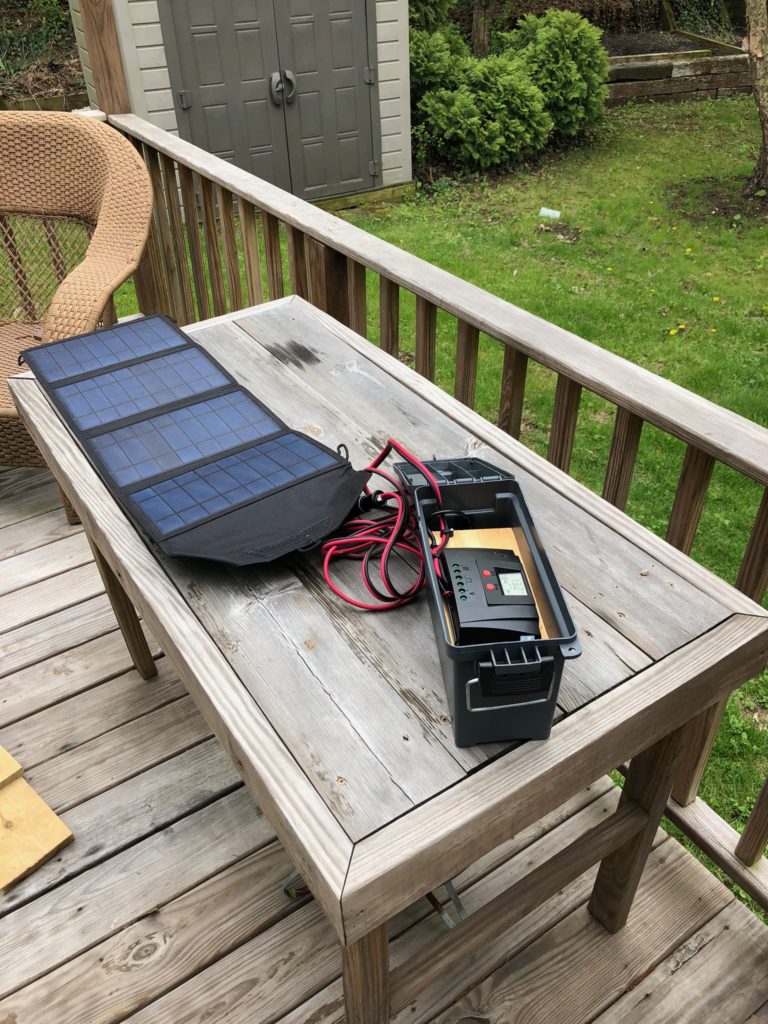We have no home of our own.
The ham radio world has plenty of contests and events. Unfortunately, almost none of them are directly relevant to off grid and QRP operators. Field Day comes to mind first, yet it is hard for anyone but the biggest high-watt boomer stations to gain any traction. Fortunately, the Rapid Deployment Amateur Radio Rally (RaDAR) coming up on April 5 is exactly what we need to fill the void.
The new kid in town.
The biggest and most popular ham radio events are decades-old and, but RaDAR is but a baby! I can’t get an exact fix on the history of the event, but it looks like it was launched in 2023. In any case, it’s a relative newcomer.
The RaDAR protocol is tailor made for off grid hams, especially those who are focused on survival/preparedness. In addition, the event does not last all day so it will not dominate an entire weekend. If you wanted to get your kids involved in ham radio but have concerns about their short attention span, then sign up for RaDAR as it requires only four hours of operating time.
How RaDAR works.
The basic premise of the event is to encourage portable radio operation. Participants achieve this by setting up a field station, making five contacts, and then moving the station to a new location for another five contacts. Repeat this process as many times as you can within a four hour window.
Although the RaDAR rules do not explicitly prohibit operating from mobile mounted radios, it would seem to me that operating mobile, while permissible, negates the spirit and purpose of the event. It’s not much of a challenge to make a contact from a mobile rig, drive to another location, make more contacts, etc. This tactic requires no effort beyond driving to a new location.
Also, there are no power limitations. If you have a full kilowatt amplifier, a power source, and a way to move it around, by all means go for it! But the nature of this event makes it ideal for QRP portable operators.
You can find complete detailed operating rules here.
So why not give it a try?
What I really like about RaDAR is that it stresses the relevance of setting up, tearing down, and moving an amateur radio station. It’s not solely about making contacts and runng up a score. If you operate a lot of portable radio, or are concerned with survival/prepping/EMCOMM, this is great opportunity to practice your skills.
What else can you do?
If organized on air events are not your thing, you can always operate in the field and practice on your own. As this blog has mentioned many times, you don’t need to wait for a certain date or a special occasion. You can have your own personal “Field Day” anytime you want. Anecdotally, as I read on line posts and talk to other hams, there seems to be a belief that skill drills are only for organized events, contests, or club projects. A longtime goal of this blog is to bust that attitude and encourage operators to get out there and operate radio whenever they can.
So give it a try! If RaDAR is not a good time for you, get out any day you can and make some contacts.
Resources.
Here is the official RaDAR website with all the details.

It actually goes back to before 2018, Julian was the first to bring it to my attention. https://oh8stn.org/blog/2018/07/13/radar-gokit-plan-radar-challenge-2018/ It’s good practice for sure, thanks for reminding me of it.
Thanks for the clarification!
I’ve been set up since 2019 and I am ready to do emergency ops from any where. It takes some initiative to get your kit reasonably fitted and not over done, which I have found to be a challenge. I have a Yaesu 300 with an OSJP, open stud J-pole, mounted on a camera tripod powered by a Bioenno converter and Li Battery, utilizing a flat fold-able Bioenno solar panel or a larger panel. .
Hi Curtis, that sounds like a great setup. I’m glad it’s working out for you.
we have an event in the Phoenix/Mesa area that we do every third Saturday of the month with the exception of December. It would obviously conflict with family Christmas celebrations. These events run from 10:00 to 14:00 hours, local time. During the cooler months of the year, we head out into parks to set up HF, VHF and UHF stations to operate completely off-grid. These are called “RUSS” events (Radios Under Sun Shade) and were named for the person who started it all, Russ Jorgensen N7TWG who became a Silent Key in 2013. The summer events allow for operations from in the home because the temperatures can be 115+ degrees! The same requirements for operating off-grid however, are still observed. This allows us to keep our equipment as well as ourselves in good condition and also allows us to interact with the public and answer questions that they may have.
Hi John, your RUSS activity is exactly what this blog has been promoting for years. There is no need to wait for Field Day, a contest, or any other special occasion. Get out there whenever you can, create your own event, and go for it.